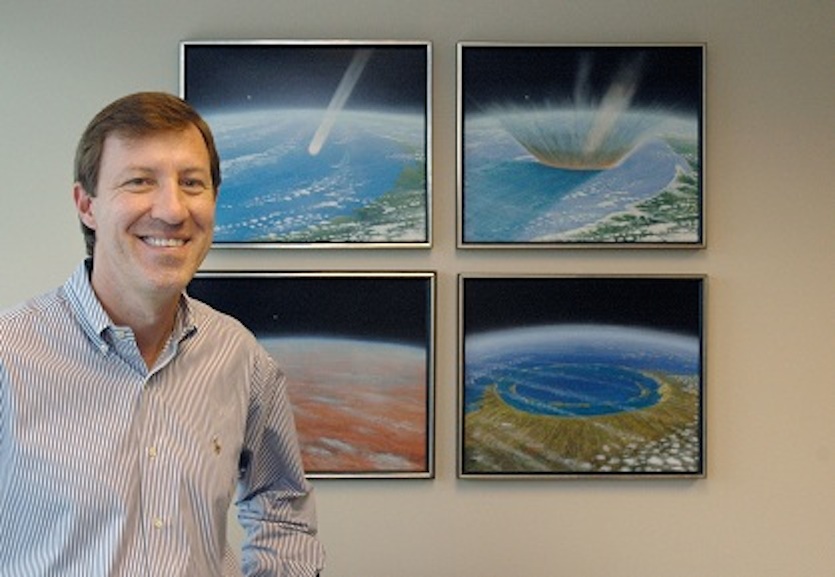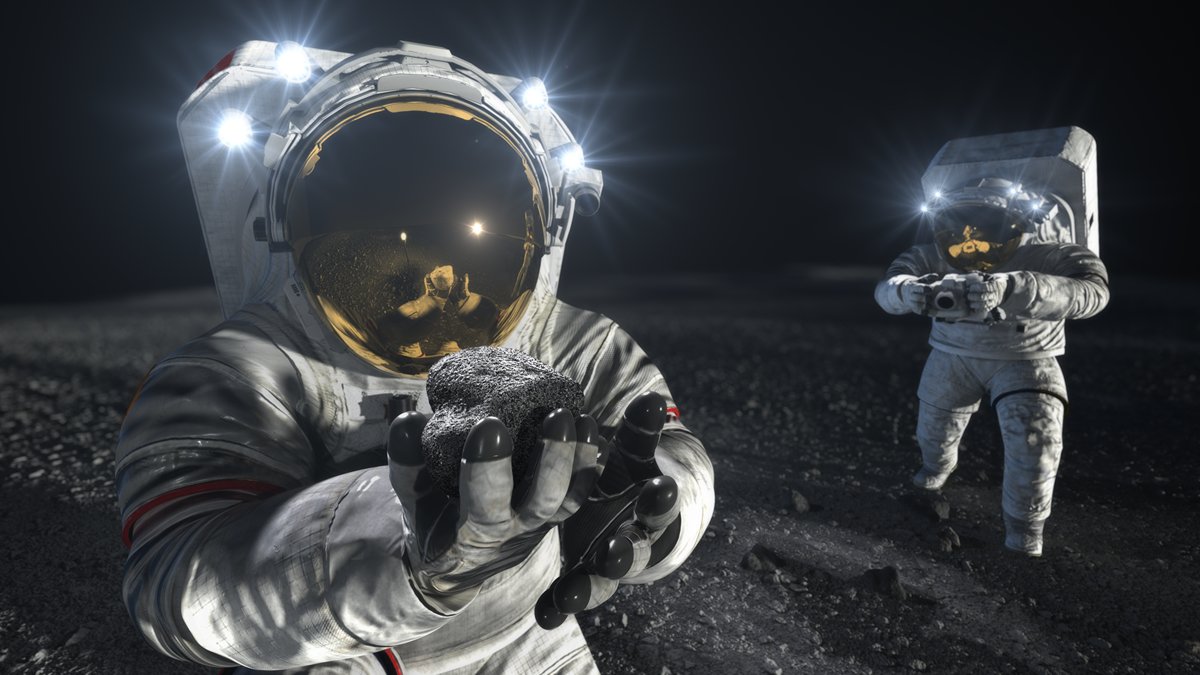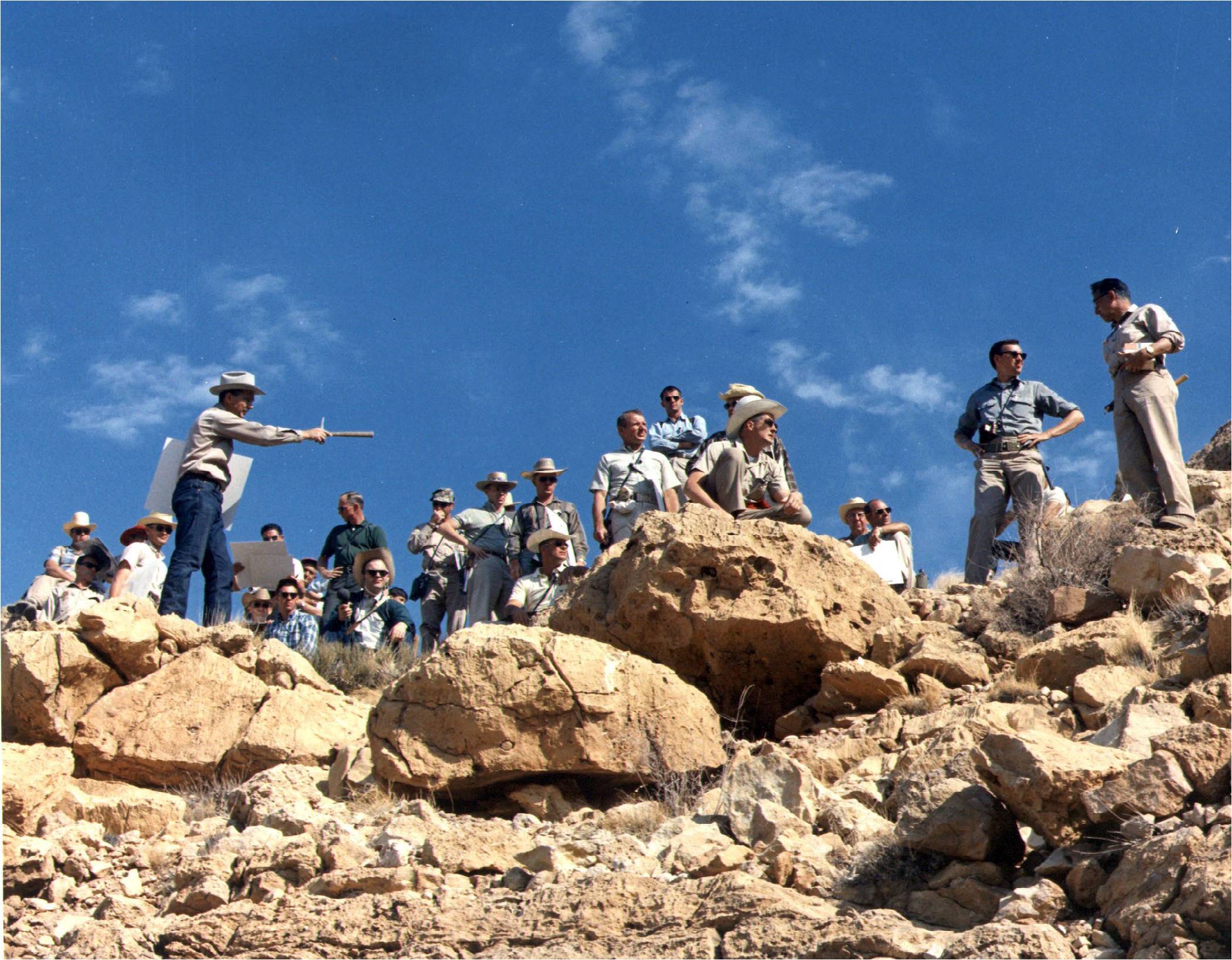Meteor crater: The hole from space that keeps on giving

Research payoffs from the out-of-this-world Meteor Crater are ongoing.

The huge, bowl-shaped Meteor Crater in Arizona that was formed some 50,000 years ago continues to yield new information, and surprisingly so.
In addition, it is a go-to spot for preparing Artemis crews how to explore the moon — as that place once did to train Apollo astronauts for lunar duties in the 1960s.
Research payoffs from the out-of-this-world Meteor Crater are ongoing, said David Kring, principal scientist at the Universities Space Research Association's Lunar and Planetary Institute in Houston, Texas. He has carried out field training and research at the Winslow, Arizona site for a decade.
Related: This long-lost asteroid impact was so big its debris left more than 30 craters
Filling in details
"We usually have two to three projects going on at the crater each year," Kring told Space.com, be they studies focused on the deformation of the crater wall or appraising the apron of tossed out debris that surrounds the impact crater. "Every year that we go back, we're mapping some new feature at the crater and filling in some of the details that just simply do not exist anywhere else on Earth," he said.
"The ejecta blanket is nearly 10 times larger in area than the crater," Kring said. The asteroid that formed the feature was an iron meteorite, Type IAB, he added, believed to be a fragment of an impact crater on an asteroid that then came to Earth and fashioned another impact crater.
Crater aging
What's the true age of the crater itself? "Actually, the uncertainty is growing," Kring said. Earlier, three independent methods produced the same number, pegging it at 50,000 years old.
Breaking space news, the latest updates on rocket launches, skywatching events and more!
"But in recent years we have realized that the calibration on two of those methods had more uncertainty attached to them than was appreciated," Kring said. "There's a possibility that the crater may be a few thousand years older than we often times stated. It's still during the last glacial epoch. It is when mammoths and mastodons were grazing in that area."
Kring and colleagues have recovered pollen from the lake sediments that filled Meteor Crater and have been able to reconstruct what the vegetation was like at the time of impact.
Similarly, the bearing of the impactor is still unclear. "I can make the case for nearly any direction, although I think most of the evidence is pointing north to south. The angle is probably on the order of 45 degrees, plus or minus a little bit, to produce a nearly circular or symmetrically-shaped crater. And that's what we have," Kring said.
Basic training
Over the years, Kring has trained active and candidate astronauts at Meteor Crater. Doing so continues a teaching and learning legacy that had the late astrogeologist Eugene "Gene" Shoemaker of the U.S. Geological Survey (USGS) and other geologists educating Apollo-era astronauts how to "read" the lunar landscape. "We do their basic training at the crater. I've proposed that we need to have more advanced training at Meteor Crater and other impact sites if we're going to conduct Artemis expeditions successfully," he said.
The first reason for training at impact sites like Meteor Crater is to expose astronauts to the type of terrain that they are going to operate within, and operate there safely, Kring said.
"I'd stipulate that the single best tool that we can deploy on the lunar surface is a well-trained astronaut," Kring advised. "We would like them to be as productive as possible in addressing the science and exploration objectives. Understanding impact cratering, the processes that go into producing them, the way they redistribute material across the lunar surface ... training is essential. I've also pointed out that the world's best spectrometers are the eyes of well-trained astronauts."
Kring said that as stunning as Meteor Crater is in the first place, he advises future moonwalkers to stand on its rim and gape, but then tells everybody to turn around and imagine another crater just to the left, and a third crater just to the right.
"That is the type of terrain that we are asking them to explore and understand how to be productive on the lunar surface," Kring concluded.
Detective work
"There's still a lot of research to be done out there," says Meteor Crater detective, Dan Durda, a senior research scientist at Southwest Research Institute in Boulder, Colorado.
"Meteor Crater is an excellent analog for our moon exploration," Durda said. "It is still the freshest, best persevered crater on the planet." He harkens back to Gene Shoemaker's work at Meteor Crater to appreciate the process of impact cratering, excavation and ejecta deposits.
"Those markers are so evidently available and readily visible. It's the perfect training ground to show those processes to the field astronauts, so they understand what it is that they are doing on the moon" said Durda.
But there is another key message blasting out of Meteor Crater. "It's bringing the whole near-Earth impact hazard to the fore," Durda said. "We had to get over the giggle factor years ago. Meteor Crater has helped illustrate what kind of devastation can be wrought from even a very moderate-sized impactor."
Infectious enthusiasm
Durda has been to Meteor Crater too many times to count. But his maiden trek to the site was in 1991, then a graduate student in Florida and on his first trip out west.
"My first experience of the crater," Durda said, "was first looking at it on television as a youngster. In watching shows like those made by National Geographic, I was fascinated by this 'geologist guy' who kept talking about this crater. He had a rifle and showing how you shoot a bullet into sand and that's how the crater was formed. That person was Gene Shoemaker. Gene was the man…and my first experience being at the crater was with Gene!"
With Shoemaker at his side, Durda said that you could not possibly be around him and not come away enthused about geology. "He had an absolutely infectious enthusiasm for what he was doing."
Astronaut trail
To Durda's eye and mind on that first visit: "Holy cow. This is a deep, massive hole in the ground. It's amazing." Shoemaker and Durda walked down together on the "Astronaut Trail," making field stops along the way to chat about aspects of the impact stratigraphy and then down to the bottom of the crater.
"The real view, the real impression, the real awe and majesty is up on the rim, looking out and across and down," added Durda.
Once again, Meteor Crater offers yet another bonus from outer space. Durda is an active member of the International Association of Astronomical Artists (IAAA). "Meteor Crater is not just a science analog. It's not just an exploration analog. It's a visual analog for telling the story of other places in the solar system that artists use," he said.
Follow us on Twitter @Spacedotcom or on Facebook.

Leonard David is an award-winning space journalist who has been reporting on space activities for more than 50 years. Currently writing as Space.com's Space Insider Columnist among his other projects, Leonard has authored numerous books on space exploration, Mars missions and more, with his latest being "Moon Rush: The New Space Race" published in 2019 by National Geographic. He also wrote "Mars: Our Future on the Red Planet" released in 2016 by National Geographic. Leonard has served as a correspondent for SpaceNews, Scientific American and Aerospace America for the AIAA. He has received many awards, including the first Ordway Award for Sustained Excellence in Spaceflight History in 2015 at the AAS Wernher von Braun Memorial Symposium. You can find out Leonard's latest project at his website and on Twitter.




